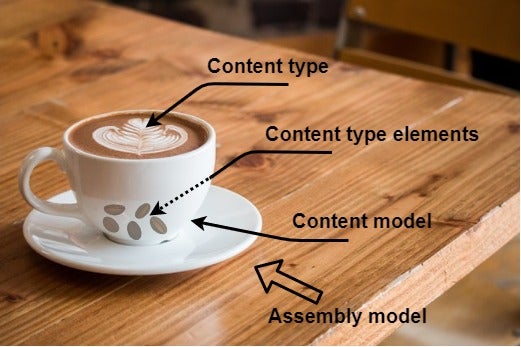What’s content modeling?
If the content were coffee, the content model would be the coffee cup, which holds all ingredients and the final product together. Find out what other parts of a content model represent compared to coffee, along with examples from other areas, and what purpose it has in your content production.
